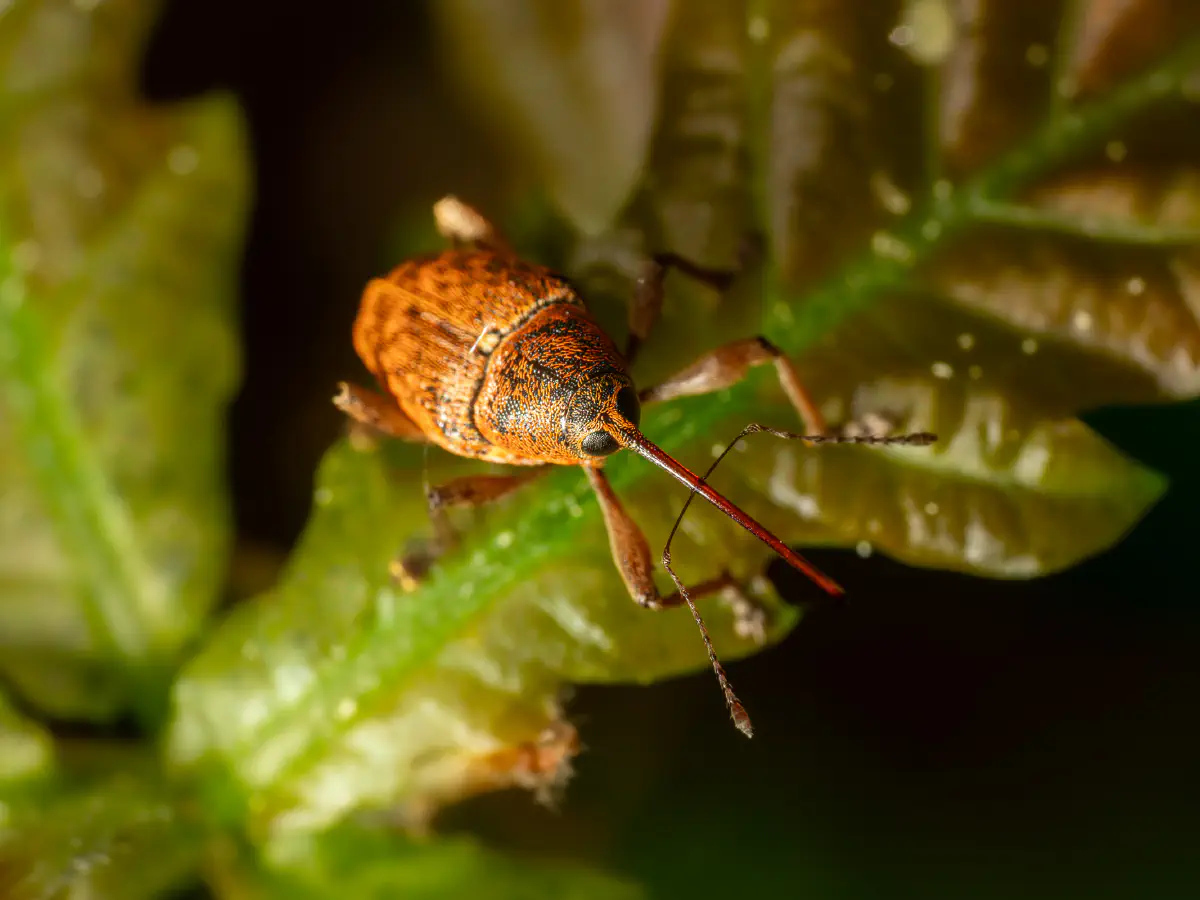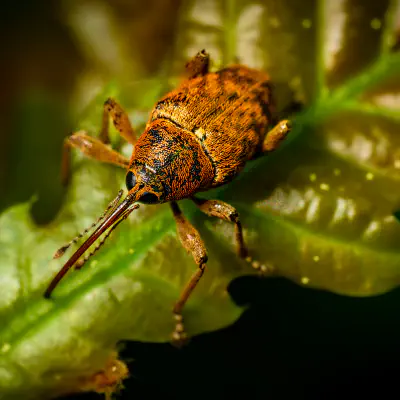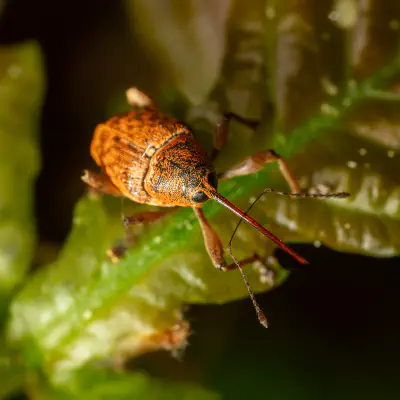This weevil ranges from 6 to 8.5 mm. The female's snout is as long as the rest of the body, with a reddish end. The male snout is about 1/3 shorter. The body cover is usually light brown, similar to the colour of mature hazelnuts. This species is often confused with another commonly occurring weevil of the same genera – the gland weevil, Curculio glandium, which lives on oaks. Despite overall similarity, the weevils differ
in some morphological details. Curculio nucum has broader segments of flagellum and the segments are covered with semi-erect hairs which in C. glandium are adpressed. Curculio glandium is considered as closely related to C. nucum and as C. undulatus, all of which are grouped together in the "glandium clade". C. cameliae from Japan is also related to this group. Other similar species in Europe that live on oaks, such as Curculio pellitus, C. venosus and C.
elephas are gathered in the "elephas clade". Species in the elephas clade have convex elytra and a dense vestiture hiding the line of the first ventral segment, whereas the glandium clade weevils have flattened elytra and the first ventral segment clearly visible through the sparse scales. Tribe Curculionini differs from other weevils, and from other Coleoptera, by the unique cone-shaped mandibles that move vertically instead of horizontally.





